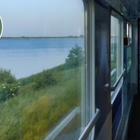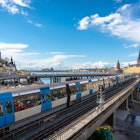It’s been 30 years since the Eurostar first connected London to mainland Europe via the Channel Tunnel. As an Australian living in London, I cannot tell you how excited I was the first time I arrived at St Pancras “International” to board a Paris-bound train.
A few trips later, including a recent long weekend in Amsterdam with my kid to celebrate a milestone birthday, I have put together a first-timer’s guide to riding the Eurostar.
Here’s everything you need to know if you’re traveling the Eurostar on a Standard class ticket. And if you want to grab a bargain, sign up for emails to be the first to know when the cheap tickets drop.
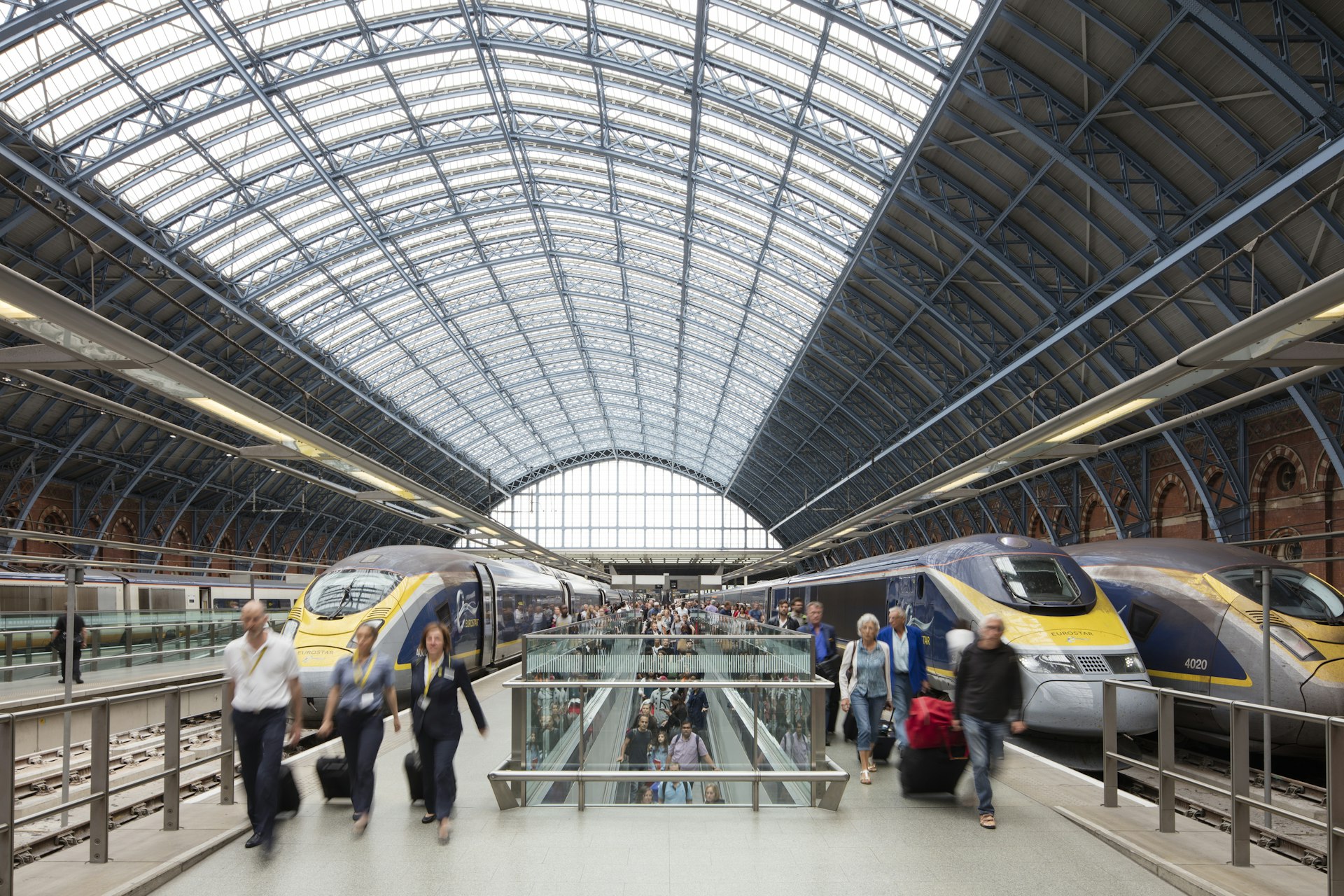
Where do you catch the Eurostar train from?
In London, it’s St Pancras International, which is right next to King’s Cross Station. There’s plenty of public transportation and dozens of places to eat and drink before you board, whether inside the train station or nearby at Coal Drops Yard (north of the station). Heading south over beyond Euston Rd, the area has a slight ghost town feel after dark.
In Paris, the train departs from Gare du Nord, which is located in the 10th arrondissement. Queues to buy tickets for onward travel on the metro are notoriously long, but you can buy tickets on the Eurostar. Be aware it’s also a prime target for pickpockets and scam artists. Don’t be distracted or, like me, you may lose a handbag while being asked a seemingly genuine question by a stranger.
When catching the Eurostar from Amsterdam Centraal, you’ll find the outbound platform is tucked away. Although in 2024 the station is having an upgrade, so watch this space. Stock up on provisions before you go through passport control. The area around the station is busy so take normal precautions, including looking out for trams and cyclists, who have right-of-way no matter what.
At Brussels Midi Station, you may notice a police presence due to heightened security in Europe. The station area is fairly safe, but it can feel less so after dark with fewer people around.
For Lille and Rotterdam, both smaller cities, the stations where the Eurostar alights are centrally located with shops, cafes and sights nearby. Public transport is easy to navigate, but these are also very walkable cities (if you're not carrying a lot of luggage).
First time visiting France? Here’s what you should know
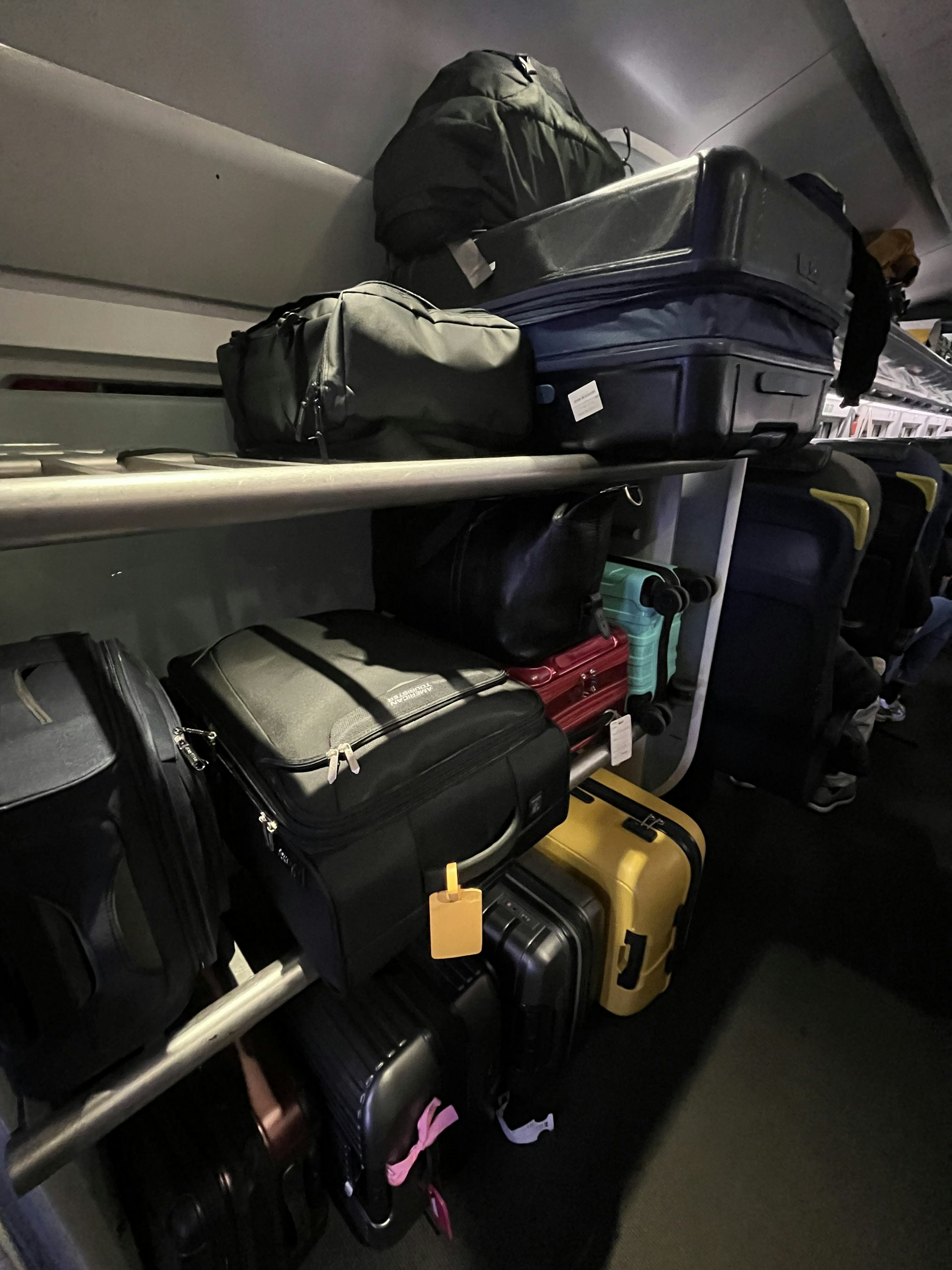
What can I take on the Eurostar?
You can take two bags up to 85cm/33.5in (at its widest/ longest point), plus one piece of hand luggage on the Eurostar. There’s no weight limit, but you do need to be able to lift your bags onto the train and potentially up to the rack above your seat.
There is luggage storage space at the end of carriages, but be aware that as we passed through Brussels on our way to Amsterdam, announcements were made to keep an eye on your belongings as thieves have been known to lighten the train’s load.
The best bit of traveling by train compared to flying: there are no restrictions on liquids. You can take all the products and bottled water you like (note that there is nowhere to refill on board). And if you’re up for a tipple, you can take one bottle of wine or bubbly or four cans of beer on board – except for during some major events, but you’ll get notified if that’s the case.
What else should I bring on the Eurostar?
There are UK and European plug sockets to recharge phones and laptops, although there are no USB sockets with Standard class seats. BYO book or download content to your devices in advance as the wi-fi and phone signal drops out regularly.
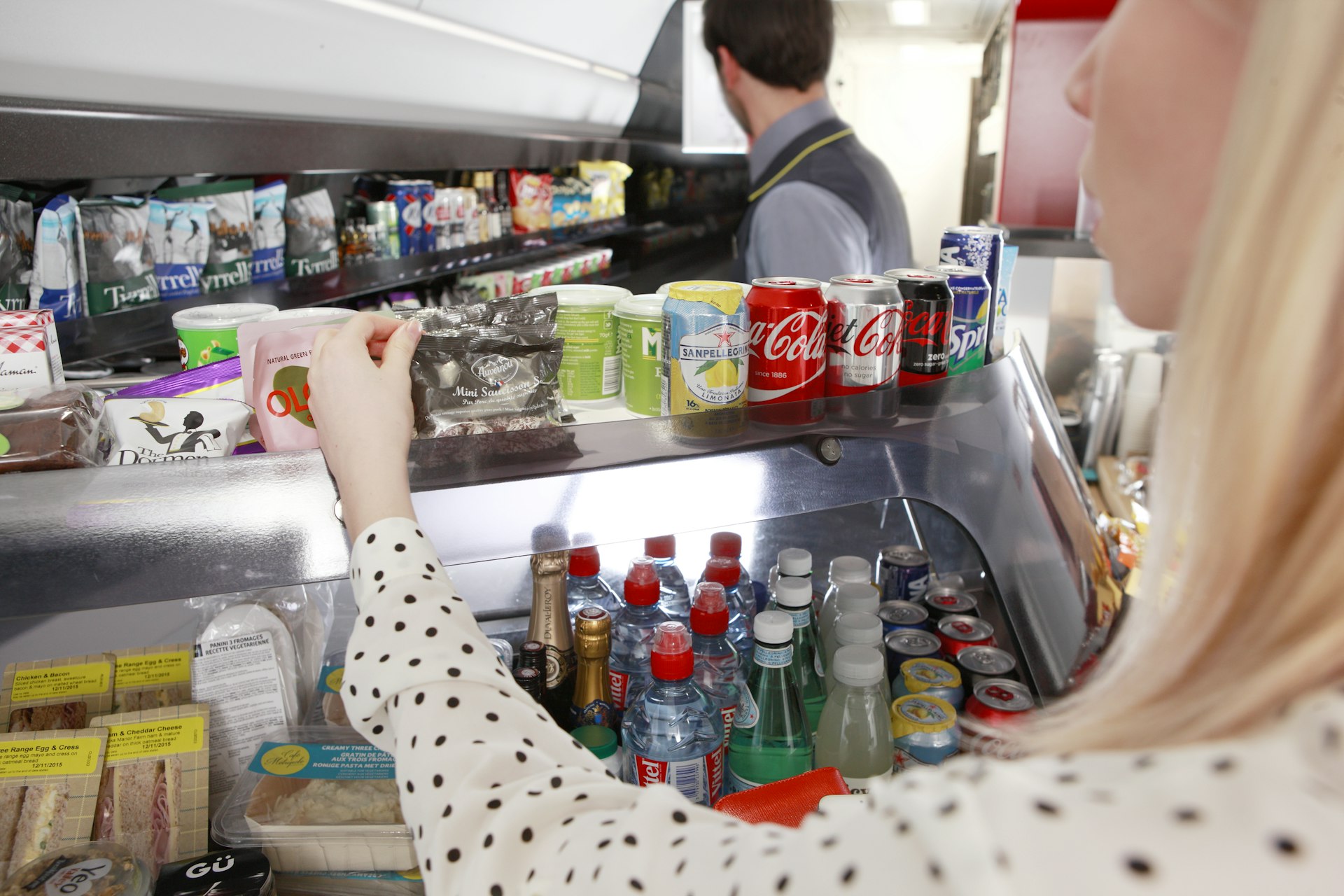
Can I buy food onboard the Eurostar?
There is a cafe carriage selling snacks and light meals for Standard class travelers (Premium classes get a meal delivered to their seats like on a plane). The menu changes twice a year, but the options are limited, so it’s often better to bring your own food, especially if you have dietary restrictions.
Buy your train supplies before you pass through passport control as the options inside the terminal at St Pancras were very busy the morning we traveled, while at Paris and Amsterdam they’re virtually non-existent.
What can’t I take with me on the Eurostar?
There’s a list of things you cannot take on the Eurostar on the website, most of which follow common sense: firearms, flammables, illegal drugs…. Perishable items like meat, fish and dairy are also on the list, but I am sure I could smell some scrumptious Dutch cheese in somebody’s bag on our way home!
Sadly taking a bike with you is a lot harder than one would hope, given the increase in interest in cycling to get around and cycling holidays in Europe. For full-sized bikes, you need to pre-book passage and disassemble your bike to check it in as luggage. Folding bikes and children’s bikes can be brought on board with you, but they need to be in a protective bag.
Do I need to print my Eurostar tickets?
Print your ticket out if you want a paper back up, but you can scan tickets directly from the Eurostar app at arrival gates. If your seat has changed for whatever reason, a fresh paper ticket will be printed for you at the gate.
Next, you move onto border control via security, like you do at an international airport.
Do I need a visa as well as my passport?
Make sure you are up-to-date on what documents you need for European travel, which varies by nationality.
As well as your passport, from late 2024 biometric information (a face scan or fingerprints) will be collected at European borders, which is expected to slow down the check-in process and may have a knock-on effect on the number of passengers that can be booked and processed per train.
Also note that from 2025, all non-EU citizens (that includes the British, obviously) will need an ETIAS (European Travel Information and Authorisation System) – a €7 visa-waiver scheme like the US ESTA – to enter Europe.
Wondering about your visa situation? We have guidance for France, the UK and Belgium
Do you really need to get there 90 minutes before your Eurostar train departs?
Yes, you really do. Cutting it fine can work out, but there are sometimes multiple trains from St Pancras, so queues can build quickly. Also seating inside terminals is limited, so do yourself a favor and get there on time.
What happens if I miss my train?
This has happened to me (or should I say, yes, I did this to myself), and Eurostar kindly rebooked our group on the next service headed to Paris. However we did lose our seat bookings and found ourselves in the backward-facing seats with no window views on the later train. Luckily the cafe carriage has large windows, so we congregated there for most of the journey.
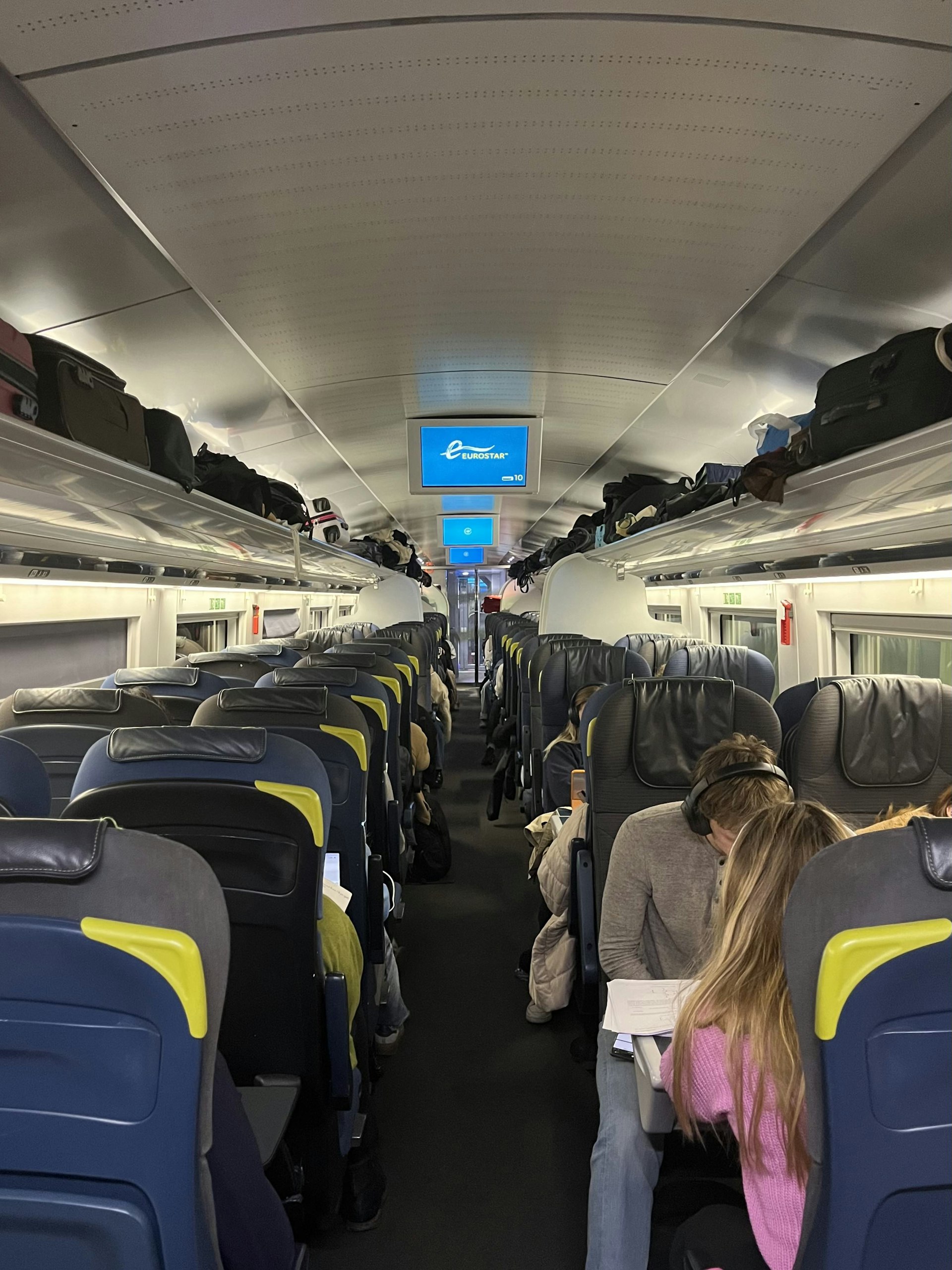
How do you choose seats?
You’ll be allocated seats with your booking, but you can change these online or via the app. I recommend you do that as soon as you can because (as mentioned) there are seats on the Eurostar with no or partial views, and while 30 minutes is under the Channel, the rest of the journey is a chance to see the changing landscape.
Some Eurostar travelers also recommend bringing some kitchen towels or wet wipes and giving your window a clean – inside and out if you can – to improve the view.
Are there sleeper trains from London?
You’ve probably seen the headlines about Europe’s new golden age of train travel with more passengers embracing the greener alternative to short-haul flights. In 2024 there has been an uptick in sleeper train services in Europe, with new overnight routes from Paris to Berlin and Vienna to Hamburg on ÖBB's Nightjet.
There’s talk of the European Sleeper company connecting London to its night services via the Eurostar, so watch this space. And a sleeper train direct from London to further European cities may well be on the horizon.
Despite the challenges Brexit has put in its path, Eurostar maintains its ambitions to reach 30 million passengers by 2030. Given the London-to-Paris train journey emits 10 times less carbon per passenger compared to flying (22kg of CO2 per person versus 224kg of CO2), it really does make sense to get to and from Europe by rail.
Planning your first journey on a sleeper train? Here are our top tips







